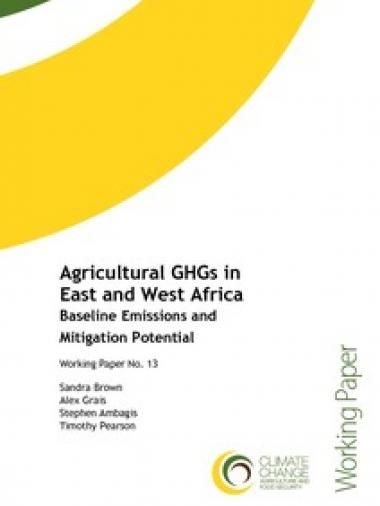Baseline GHG emissions from the agricultural sector and mitigation potential in countries of East and West Africa

The main question behind the work presented here is: How can agricultural greenhouse gas
emissions be reduced or sequestration enhanced while maintaining and even increasing food
supply. To address this question, we first estimated the business-as-usual emissions of
greenhouse gases from the agricultural sector using the IPCC framework and land cover
datasets based satellite imagery for the base year 2006 for four East African countries—
Ethiopia, Kenya, Tanzania, and Uganda, and five West African countries—Burkina Faso,
Ghana, Mali, Niger, and Senegal. We found the total emissions to be in the order of about
129 million t CO2e/yr., with emissions from activities related to livestock dominating (84% of
the total). Then, we estimated the annual quantity of CO2e/ha that could be sequestered in soil
and vegetation (agroforests and native ecosystems) above business-as-usual for several
potential mitigation options across the nine countries by four climatic zones. We found that
the change in practices included soil only resulted in carbon sequestration rates of about 0.4 to
5 t CO2e/ha/yr and for changes that included in soil and vegetation of about 6 to 22 t
CO2e/ha/yr
Citation
Brown S, Grais A, Ambagis S, Pearson T. 2012. Baseline GHG emissions from the agricultural sector and mitigation potential in countries of East and West Africa. CCAFS Working Paper 13. Copenhagen, Denmark: CCAFS.